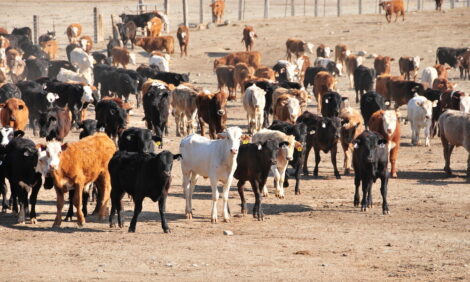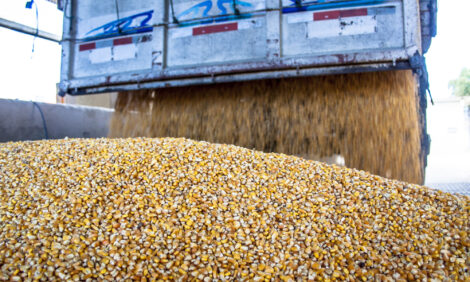



Managing Short Feed Supplies
US - Feed supplies in many areas are tighter than normal. A “show of hands” crowd survey at a recent meeting had producers estimating this year’s hay crop reduced between 10 and 50 per cent of normal, writes Gene Schmitz, MU Extension Livestock Specialist.
With the on-going drought in the southern US, hay demand and prices continue to increase, thus winter feed costs appear to also be on the rise for local producers.
If producers are short of feed right now, the best way to reduce feed needs is to wean spring-born calves. This reduces cow dry matter intake by 1.5 to 2.5 pounds per day and also reduces their energy and protein needs. Additionally, weaning cows before they lose too much body condition means they won’t have to add as much weight over the fall and winter, thus accounting for additional feed savings.
We have several feed resources at our disposal. Many producers chopped corn for silage. Due to reduced grain yields and potential nitrate issues, I am recommending sampling corn silage for nutrient content and nitrate concentration.
In addition to forage nutrient analysis, many commercial laboratories can also do a quantitative nitrate test. If nitrate concentration is a concern in the silage, it can be limit fed without problems, but the concentration must be known in order to safely feed the silage.
An often underutilised feed resource is grazing crop residues. It may be cheaper to repair fences and haul water to cattle on corn stalks this fall than to buy hay. One note of caution with grazing corn stalks damaged by windstorms is that producers may need to strip graze the fields to prevent cows from overeating corn if there has been substantial ear loss. Assess the level of corn left in the field before turning out cows.
If winter annuals have been seeded, they can provide late fall grazing and early spring forage for grazing or hay.
Stockpiled fescue pasture will be valuable this year. The amount of grazing days provided by stockpiled pasture can be extended by strip-grazing the pastures. Portable electric fences can be placed to allow animals a week or less grazing area. After a few days to a week, advance the fence away from the watering source. There is no need to put up a back fence, since there will be no regrowth in the late fall and winter months.
Finally, buying or selling hay needs to be done on a weight basis, not a per bale basis. At $40 per bale, a bale weighing 1,100 pounds sells for $72.73 per ton while a bale weighing 1,300 pounds sells for $61.54 per ton. That $11.19 difference per ton is either lost revenue or unnecessary expense depending on whether you are selling or buying the hay.



